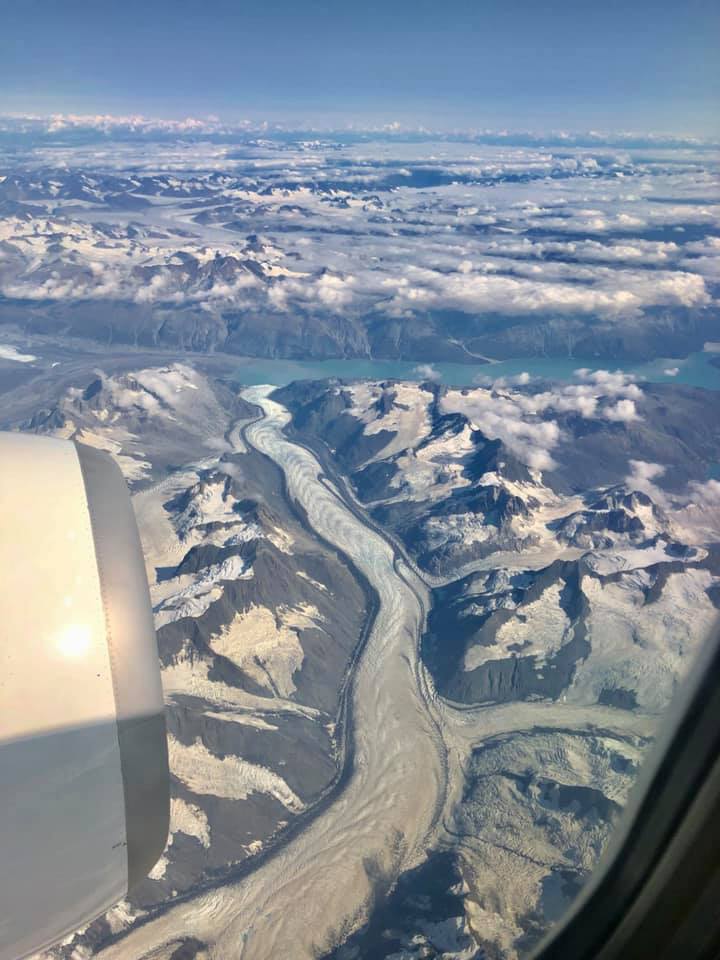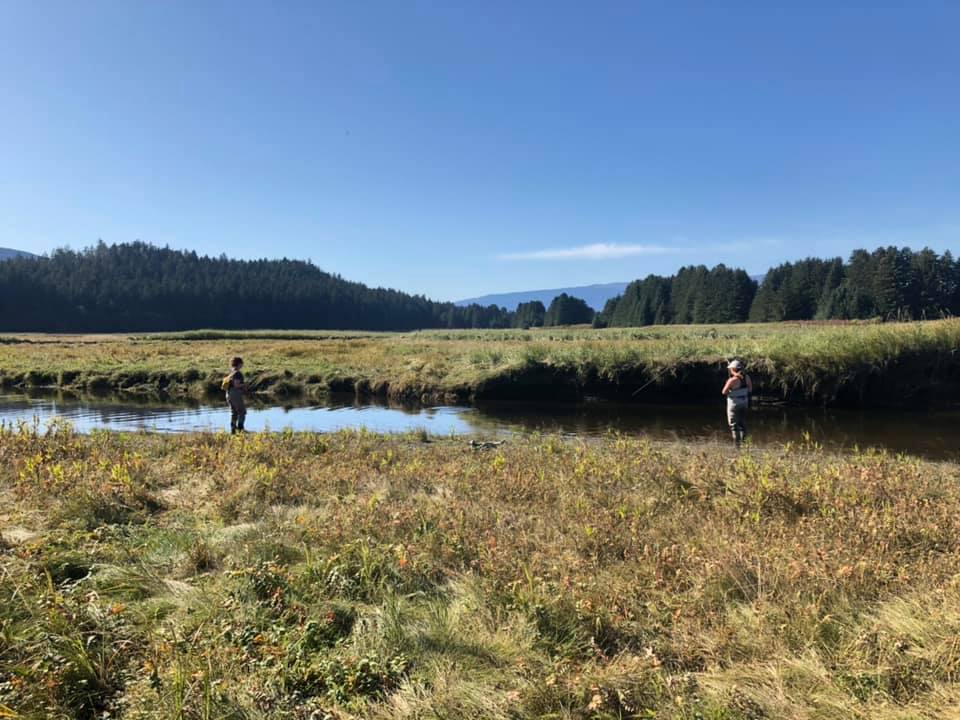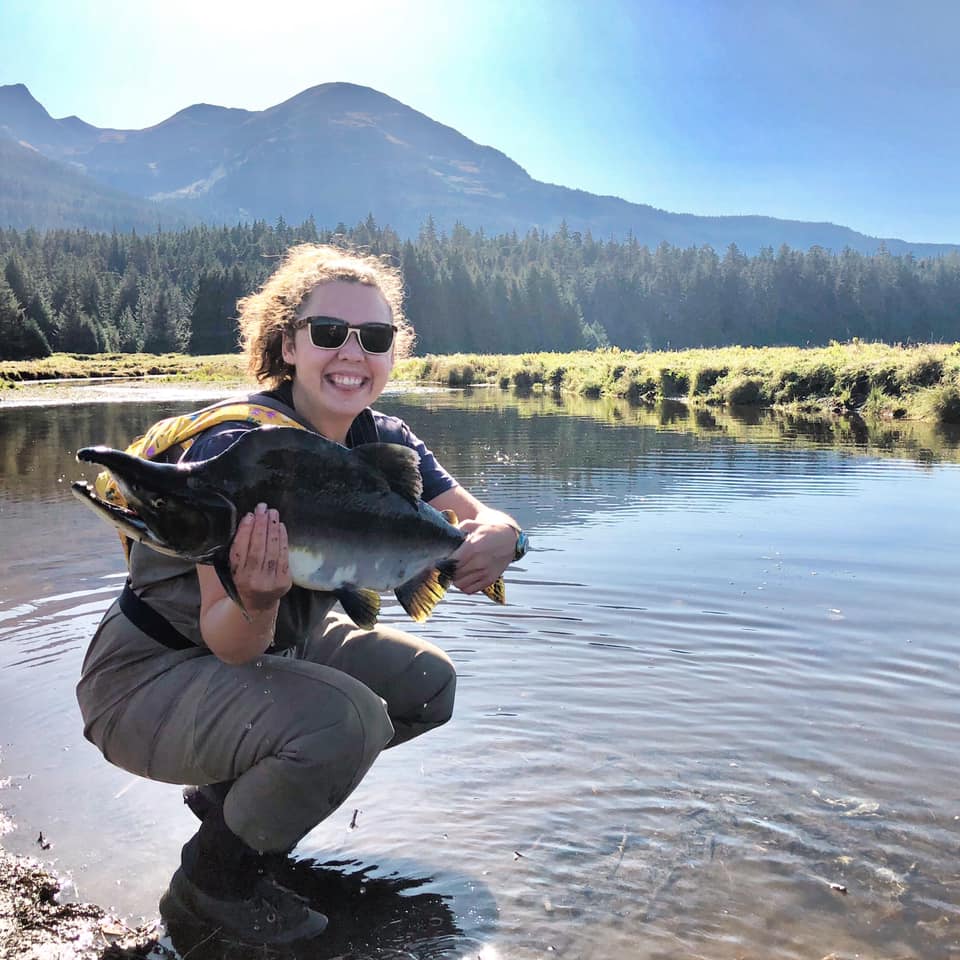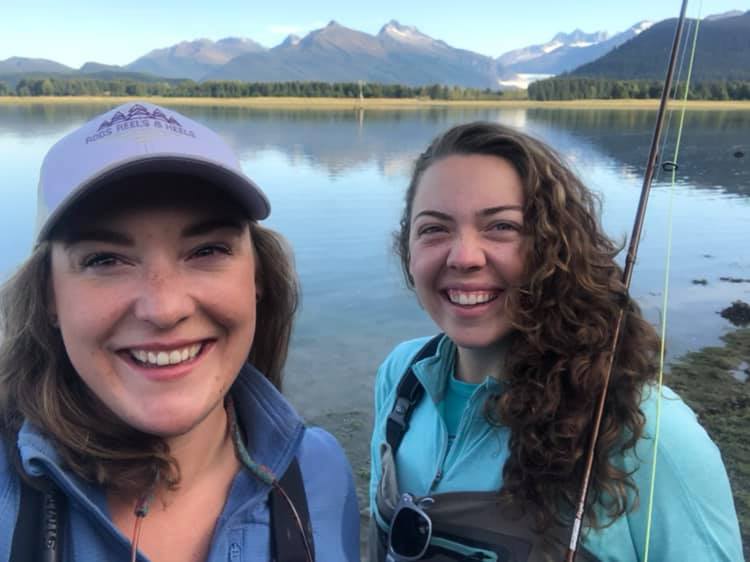If you’ve followed along with Trout Unlimited’s campaigns in Alaska over the past few months, you know that from Pebble Mine advancements to Roadless Rule rollbacks, incredible places like Bristol Bay and the Tongass National Forest are at great risk.
In response to the increased need for capacity on these TU campaigns, the Alaska program brought me and Kayla Roys on to help generate support around Bristol Bay and the Tongass, especially during Draft Environmental Impact Statement comment periods. For the proposed Pebble Mine, that 120-day comment period was earlier this spring, and we were able to rally 9,000 sportsmen and women to submit comments opposing the mine. For the Roadless Rule and the Tongass National Forest, the comment period will come later this fall.
I live in Anchorage and work in the TU office here. Kayla, born and raised in Juneau, works remotely in the state capital, and is the newest addition to the TU Alaska team. In the name of collaboration, team building and knowledge sharing, I took a quick flight down to Juneau to spend some time on the ground with Kayla.

A clear day flying into Juneau meant views of glaciers that stretch for miles and deep green trees covering vast swaths of land. When I arrived, local streams and trails were calling our names, but we quickly got to work to maximize our time together. We reviewed and made sure Kayla’s organizing tools were sharp–things like our digital mailing system, posting blogs for effectively communicating with our chapter members and larger supportive communities, and other online resources.
From working at Kayla’s home office on Douglas Island, to a waterfront view on the University of Alaska-Southeast’s campus, we brainstormed creative and unique ways for engaging anglers and hunters in the upcoming Roadless Rule comment period. Stay tuned for seeing those in action over the next few months.
But sunny, fall days in Southeast Alaska got the best of us. Kayla and I collectively decided to hold our final brainstorming session in Trout Unlimited fashion: on the water. Kayla lent me an extra pair of waders, rod and reel, we loaded up the skiff, grabbed a couple friends, and away we went. After a 30-minute boat ride we arrived at a watershed that was beaming with life. We tromped through meadows of tall grass and found ourselves at a creek with thousands of wild pink salmon and silver salmon getting ready to spawn.

In between catching wild salmon and discussions of potential event ideas and outreach materials, I couldn’t help but take in the scenery. Spruce and hemlock trees covered mountains and stood in a 360-degree view around us. Bald eagles swept low across the water. Bear trails covered the entirety of the watershed we were fishing, and on the boat ride out, we passed by glaciers, whales, seals and sea lions.
These views bring millions of people to visit Southeast Alaska each year. In between the distinct calls of the eagles, we also heard the airplanes and helicopters circling overhead, flying anglers out to remote streams on nearby Admiralty Island, or for scenic tours of the Mendenhall glacier. This (not to mention the three cruise ships I had seen docked downtown earlier that morning) is indicative of a robust tourism economy that Kayla told me adds more than $1 billion to the local economy every year.
I tried to think about what would happen if the Roadless Rule was taken away in Alaska. The rule, created almost 20 years ago, keeps wild landscapes intact by protecting undeveloped areas from commercial-scale logging, and the road-building that comes along with it.
Without the Roadless Rule, I imagine I’d be looking at giant patches of clear cut amid the otherwise tree-covered mountains. Kayla probably wouldn’t have caught three giant silver salmon–these fish need healthy forest habitats to thrive. We probably wouldn’t see float planes circling, as tourists would likely pass on soaring over scarred landscape to visit fish-less rivers.

While the Tongass isn’t the issue area I work on daily, I walked away from our morning meeting with a clear understanding of why keeping the Roadless Rule in place, and therefore protecting the Tongass, is vital for sustaining fish and people in Southeast Alaska. I encourage everyone to use their voice this fall to advocate for the recreational, fisheries, tourism economy and Tongass National Forest when the comment period opens.
I stayed through the weekend to fish with Kayla and to connect with other Juneau friends. Before Kayla took me to the airport on Sunday night, I took her out for a drink as a small show of appreciation for hosting me over the past few days.
We sipped gin and tonics and talked more about fishing, life, and work. As women under the age of 30, we shared our experiences being outliers in the larger angling community, both the positive and negative. We talked about barriers to entry that extend past ourselves, things like socioeconomic status that prevent others from joining the great sport. We mutually agreed that working for Trout Unlimited’s Alaska program, especially under the leadership of other empowering and supportive women, is not something we take for granted one bit.
Between our outreach planning, fishing adventures, and relationship building, I’d say it was a very successful work trip to Southeast Alaska. I look forward to seeing Kayla implement some of the tactics we drummed up, and I feel confident that sportsmen and women will again be vocal in their support for clean water, healthy fish habitat, and sustainable economies. In the Last Frontier, it’s the best we’ve got, and we want to keep it around for years to come.
Meghan Barker is TU’s Alaska organizer, and lives and works in Anchorage. Kayla Roys is the Southeast Alaska outreach coordinator based in Juneau.



